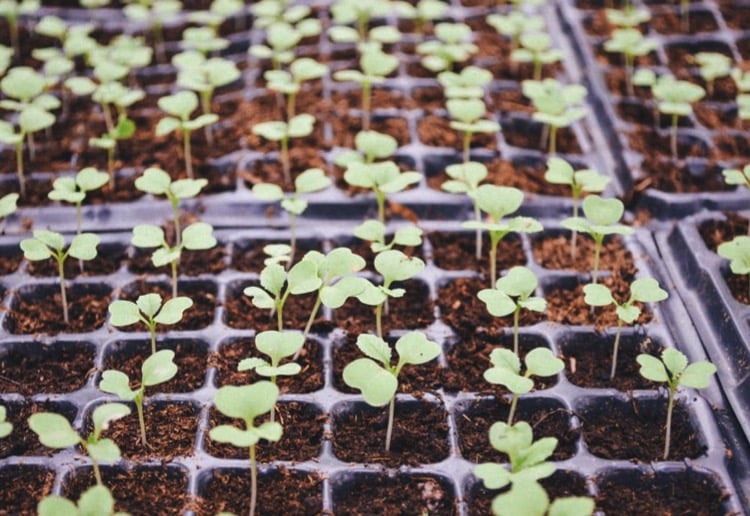Turning your backyard into a lavish garden is the most wonderful thing you can do, for yourself and your loved ones.
A recent study conducted on two families has shown that switching to an organic diet significantly reduces a level of pesticides in the body, especially when it comes to children. Since their organs are still developing, they are more susceptible to the effects of toxic chemicals, so the exposure to pesticides can be far more dangerous for them than for the adults.
Growing a garden means turning a piece of land into an abundant, colourful, and beautiful piece of heaven while providing your family fresh and healthy meals.
Design the garden
Every garden should be appreciated, not only for the food on the table, but for being a sight for sore eyes. Ignore the usual rectangular shape with straight rows that serves the industrial purpose and apply your vision of rich and wild garden with the curves and shapes that celebrate natural forms.
Awake the creativity and sketch your future garden but take care of the basics, such as picking the sunny spots, leaving enough space for the plants as well as leaving enough space for you to move between them.
Prepare the soil
Before planting, make sure that you have the soil rich in organic matter and nutrients. If you wish to prepare a soil that was previously a lawn, start in Autumn by mowing the lawn, and covering it with three or four layers of newspaper. Cover the newspaper with a thick layer of straw, and after that, cover it with a thick layer of compost.
By Spring, you will have soil ready for Spring planting, filled with earthworms, and rich in organic matter. Most plants require a soil pH between 6.0 – 6.8, so make sure to test the soil, and to plant limestone to raise pH or add sulphur to lower it.
Raise the beds
Planting in raised beds has proved to be more efficient because it provides drainage of the soil, as well as better heating of the beds. Also, they allow easier soil amendment as long as they are at least 6 inches above the ground, and no broader than 4 feet.
Planting in raised beds enables you to work on the clean path and not crush plants underfoot. Consider multiple bedding plans as a part of your garden design since it will look interesting, and will prove to be functional.
Decide what to grow
Start small and simple, plant the veggies that you know that your family will eat. Beans, lettuce, tomatoes, and pumpkin are the easiest plants to grow, and starting with those would be a clever move.
Learn about the warm and cold weather vegetables and when to plant them. Choose whether you’ll sow seeds directly in the ground or you will buy seedlings.
Crops that grow best in cool weather are peas, carrots, radishes, beetroot, and spinach. Warm weather veggies are cucumber, beans, pumpkin, and corn. Although these are mostly low-maintenance veggies, learn when to sow them, and how to take care of them.
Plant some flowers too
Near the planted vegetables you can plant a row of flowers that will stand as a colourful border. Keep in mind the height, leaf texture, and colour of the flowers to create a vibrant but meaningful contrast.
Aside from looking lovely, flowers planted near the vegetables can be quite useful since they attract beneficial insects that eat pests and aid pollination. Best flowers to plant in the vegetable garden are chamomile, calendula, marigold, buckwheat, and clover.
Maintain your garden
Someone said that the best fertiliser for the plants is the shadow of the gardener. Be present in your garden, whether to inspect, weed out or just to take a walk. Take care of the plants as well as the soil by nourishing it with compost instead of industrial fertilizers.
Provide the sunlight by trimming the trees and look for some handy garden hoses to regularly water the ground. Look for the signs of pests or any other threat and act timely. Also, learn more about your new hobby every day and apply your knowledge.
Planning a garden and taking an effort to create it can bring you only good and improve the quality of life. Aside from obvious health benefits, spending time in the garden is relaxing, stress relieving, and rewarding. It mutes distractions from this hectic urban life and connects us with nature and with our long forgotten selves.
Are you a gardener? Share with us in the comments.
We may get commissions for purchases made using links in this post. Learn more.




















12:44 pm
9:52 pm
12:40 am
10:30 am
8:34 am
6:29 pm
5:04 pm
3:27 pm
10:11 pm
1:32 pm
8:36 am
8:05 pm
6:01 pm
9:31 pm
11:45 am
- 1
- 2
- »
Post a comment